
The world of commercial design is a dynamic and ever-evolving field that thrives on creativity, innovation, and functionality. Among the myriad design elements, tile is a versatile and visually appealing choice strategically utilized to transform various commercial spaces into functional, aesthetically pleasing environments. In this blog, we will explore how tile design plays a pivotal role in commercial settings, employing different design elements and principles to enhance branding, customer experience, and the overall ambiance. From retail stores and restaurants to corporate offices and healthcare facilities, tile applications in commercial design are diverse and impactful. We will delve into case studies, best practices, and emerging trends to provide valuable insights for architects, interior designers, and business owners aiming to optimize their commercial spaces.
Tiles, whether ceramic, porcelain, glass, or natural stone, offer a unique canvas for commercial designers with which to work. -Tile’s versatility extends throughout various aspects of design, making it an excellent choice for crafting functional, visually striking spaces that align with the goals and branding of the business.
Commercial spaces often rely on branding to establish and communicate identity. Tiles, with an extensive range of colors, shapes, and patterns, offer the perfect means to reflect a brand’s image. Whether it’s the elegant, monochromatic tiles of a luxury brand or the vibrant and eclectic patterns used by a trendy fashion retailer, tiles play a critical role in conveying the essence of the business.
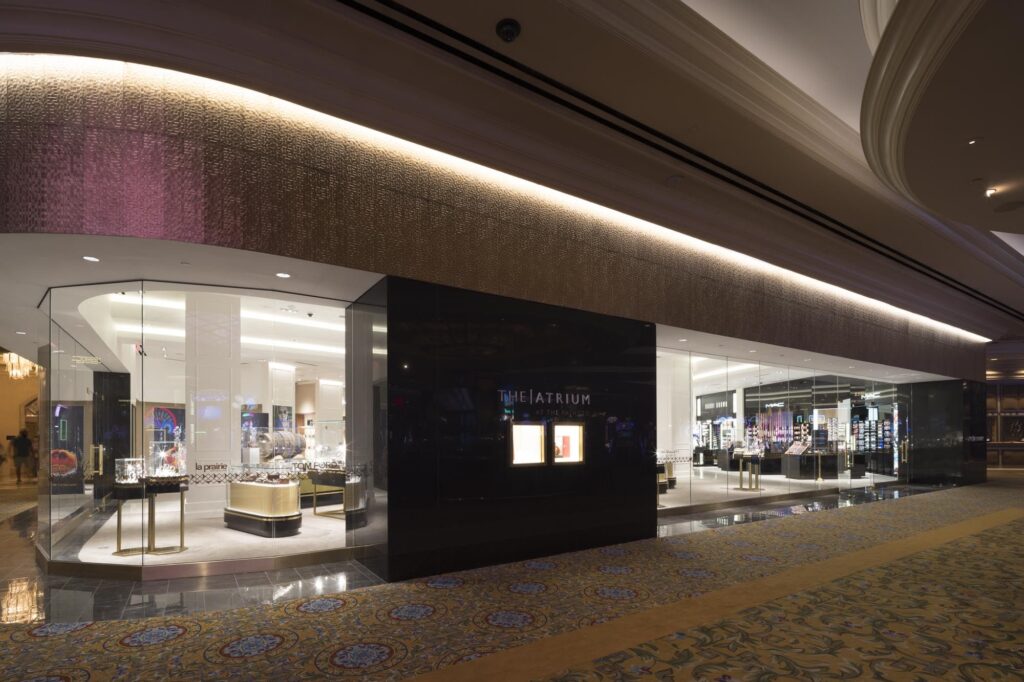
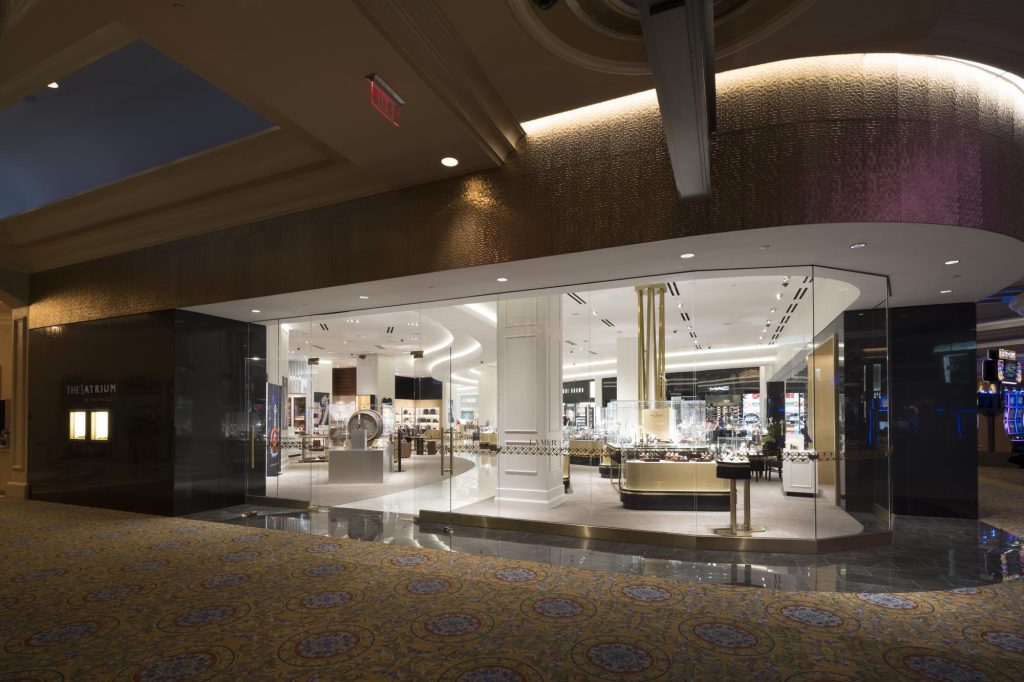
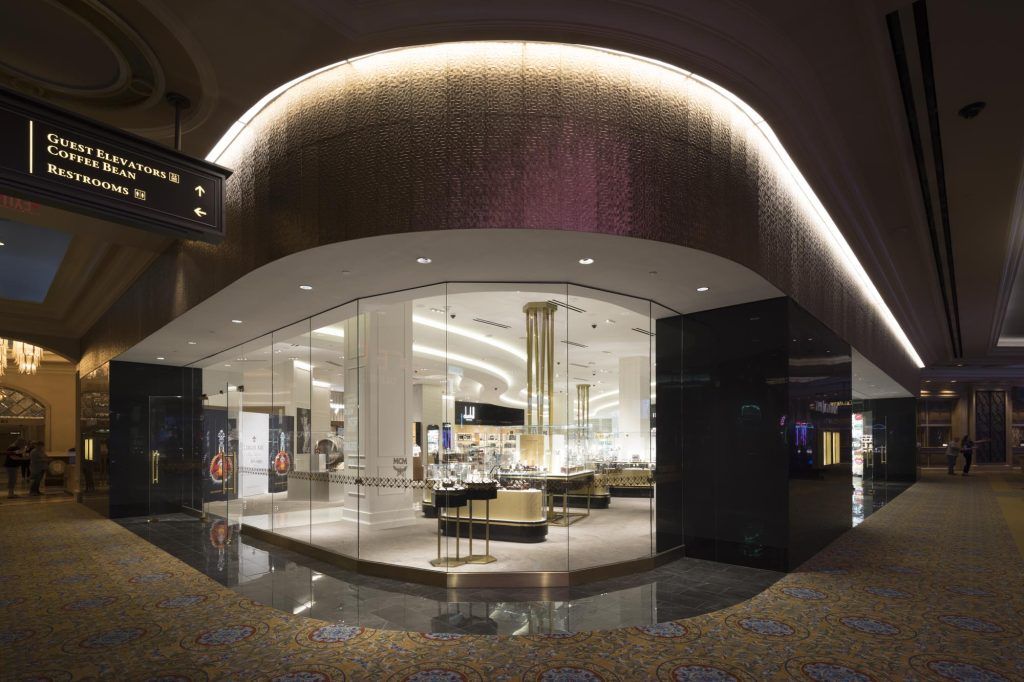
Consider the case of The Atrium Palazzo, which used gold and black finishes to create an immediate sense of opulence and sophistication. With their luminous colorways, these tiles communicated the brand’s commitment to luxury and excellence. In this instance, using a specific tile type was directly linked to the branding strategy.
The customer experience is paramount in many commercial settings, and design can significantly impact this aspect. From retail stores to restaurants, the choice of tiles affects how customers perceive and interact within the space.
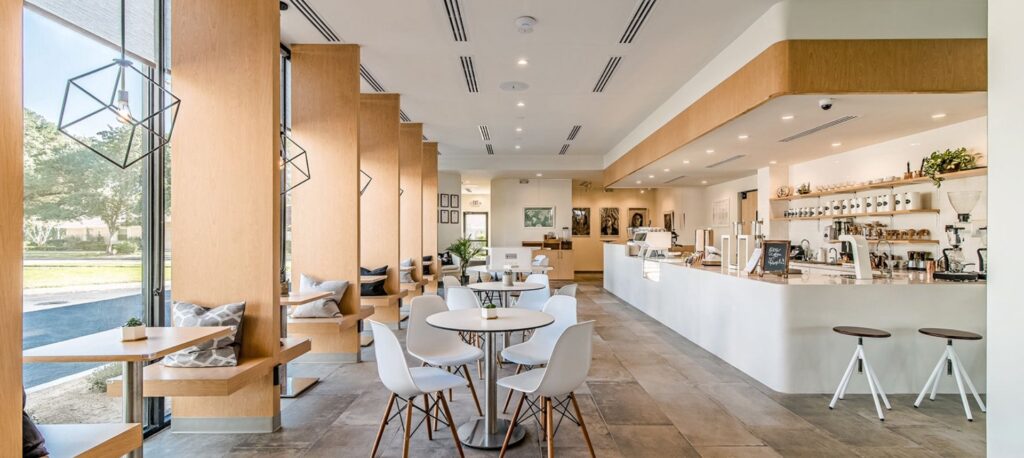
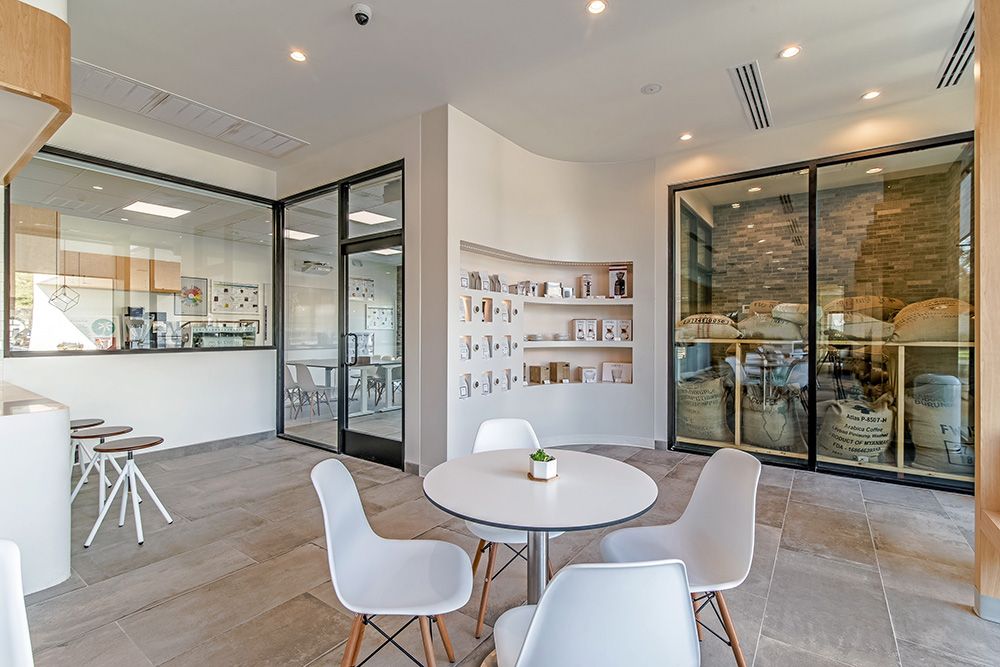
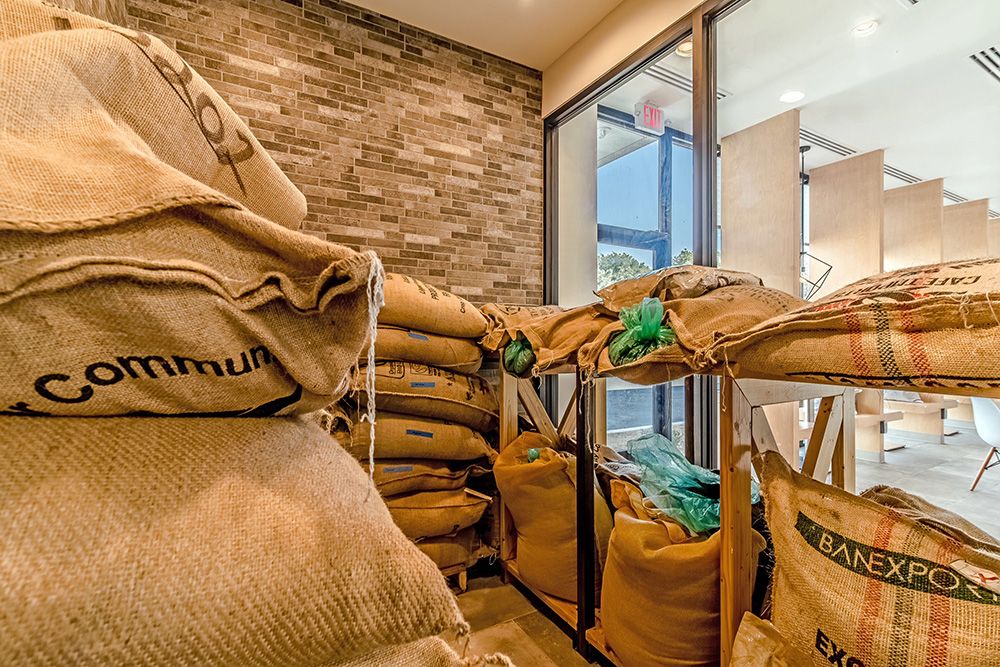
At the Blendin Coffee Club, the goal was a neutral design so that the customer would focus on the coffee. The customer’s entire experience was thoughtfully crafted with a clear purpose. The owner, Weihong Zhang, has created an educational program offering roasting, brewing, and barista skills courses. You can take advantage of these educational opportunities from inside the shop itself. The images show how a neutral tile palette benefits the overall aesthetic and goal.
Commercial spaces endure heavy foot traffic and various environmental factors. Hence, the durability of materials is crucial. Tiles are renowned for their robustness and resistance to wear and tear, making them a practical choice for commercial spaces.
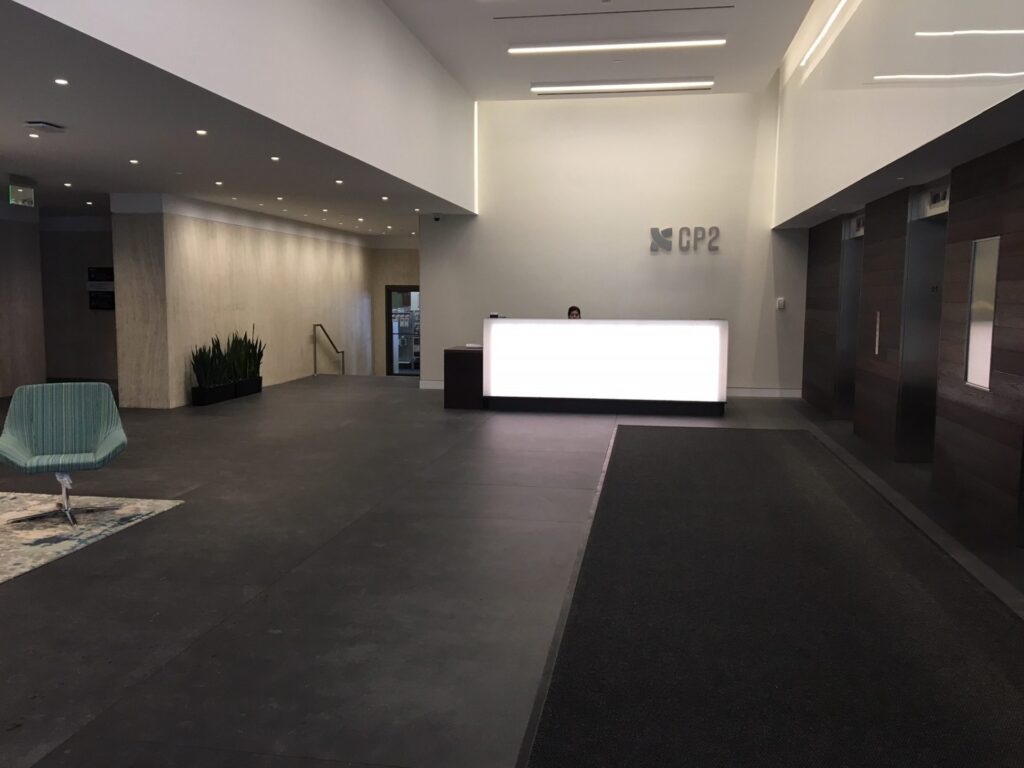
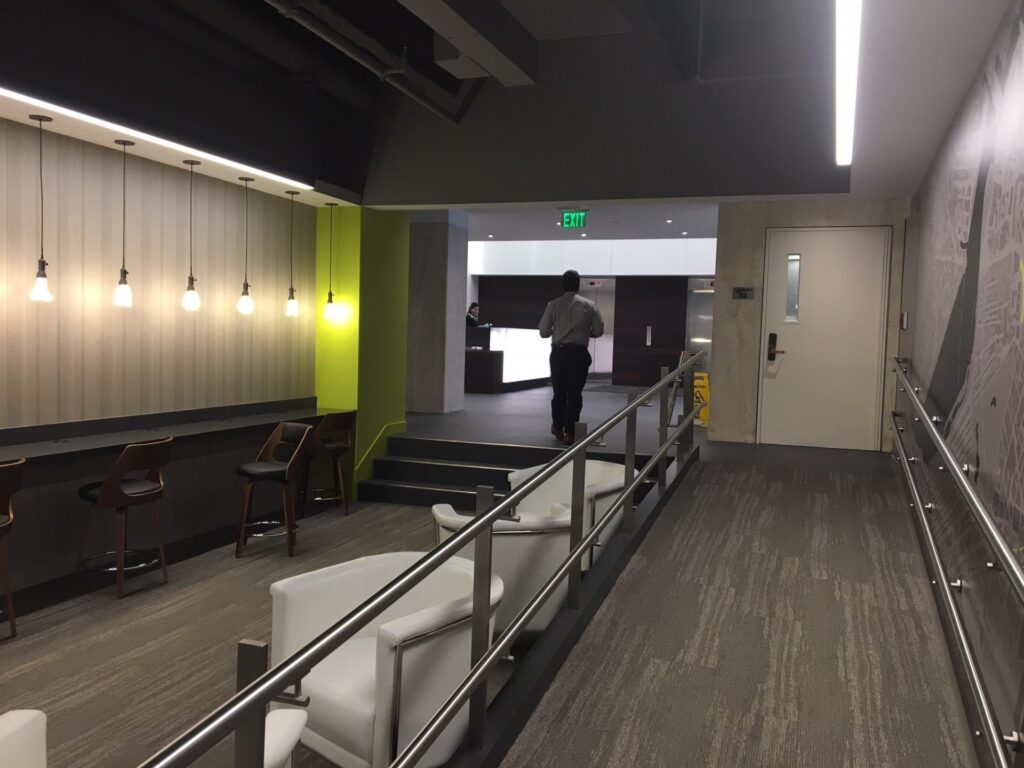
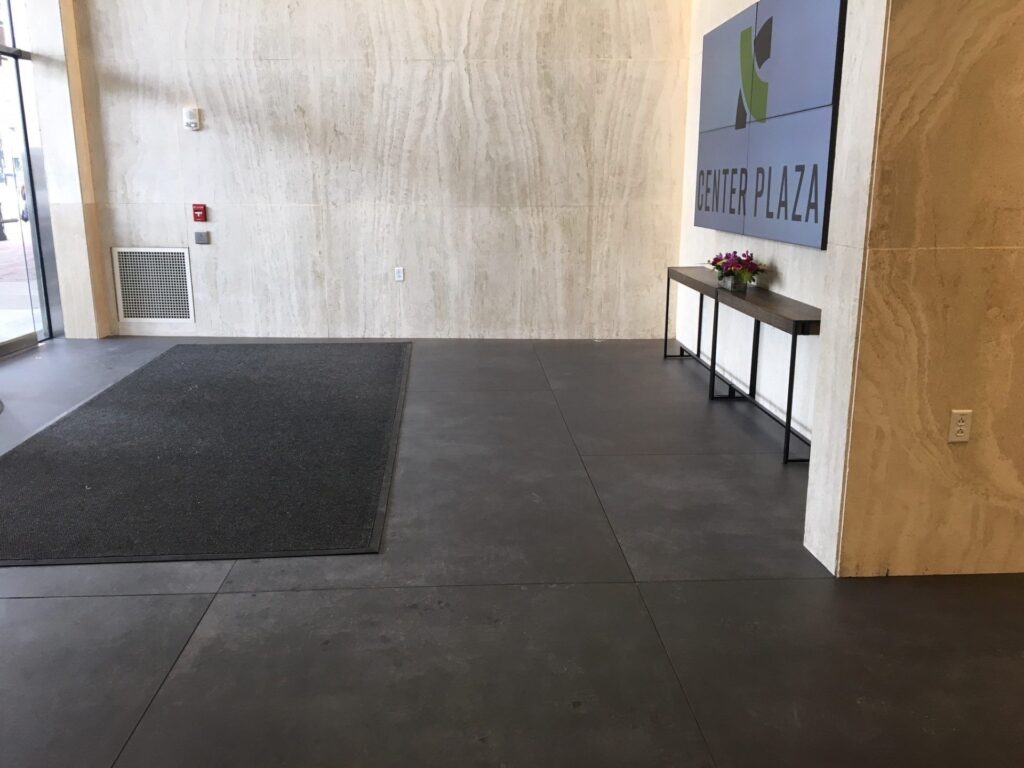
In corporate and mixed-use settings, tiles are often used in high-traffic areas such as lobbies and hallways. Porcelain tiles, with their strength and ease of maintenance, are ideal in these situations. Subtle design elements can also add a touch of sophistication to the space, enhancing the overall ambiance. Discover how CBT Architects‘ design vision was maintained in the Center Plaza project using technically advanced porcelain tiles.
Let’s explore how tile is strategically employed in various commercial settings, each with its unique requirements and objectives.
In retail, creating a visually appealing and engaging atmosphere is essential to attract and retain customers. Tiles are used in numerous ways to achieve this.
Corporate offices have a different set of priorities when it comes to design. These spaces focus on creating a professional, productive environment.
In health and wellness settings, hygiene and ease of maintenance are top priorities. Tiles are used for their durability and ability to uphold these standards.
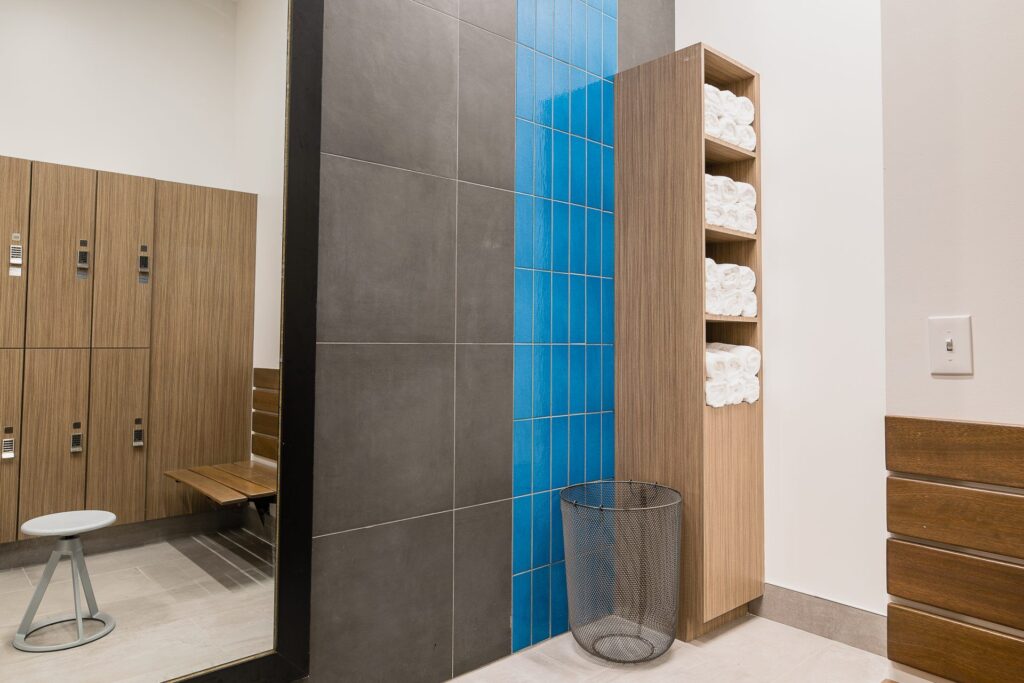
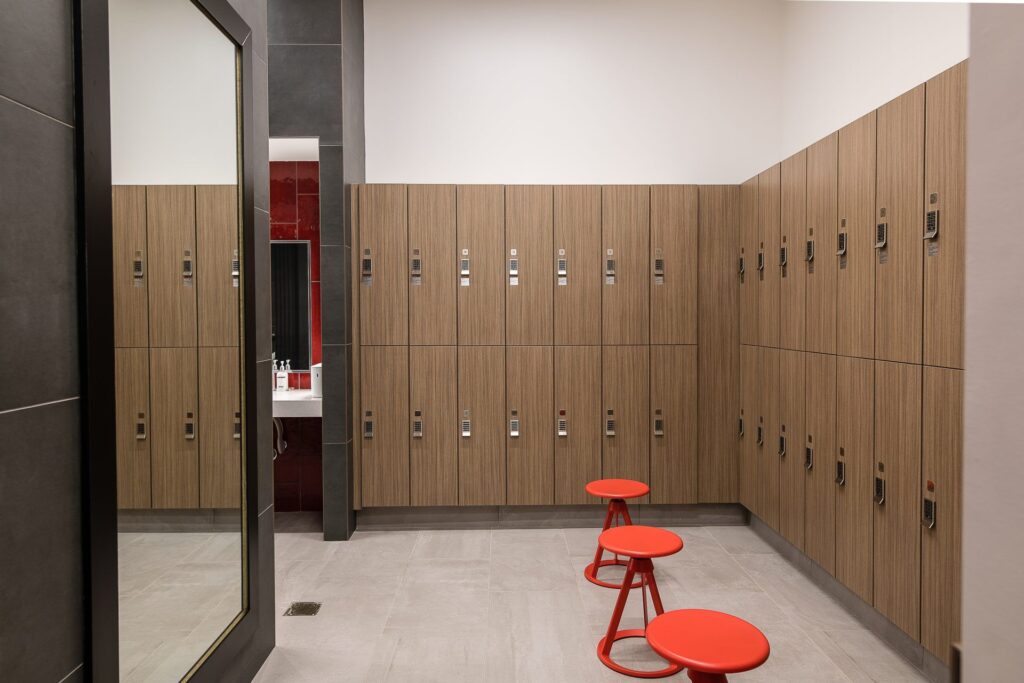
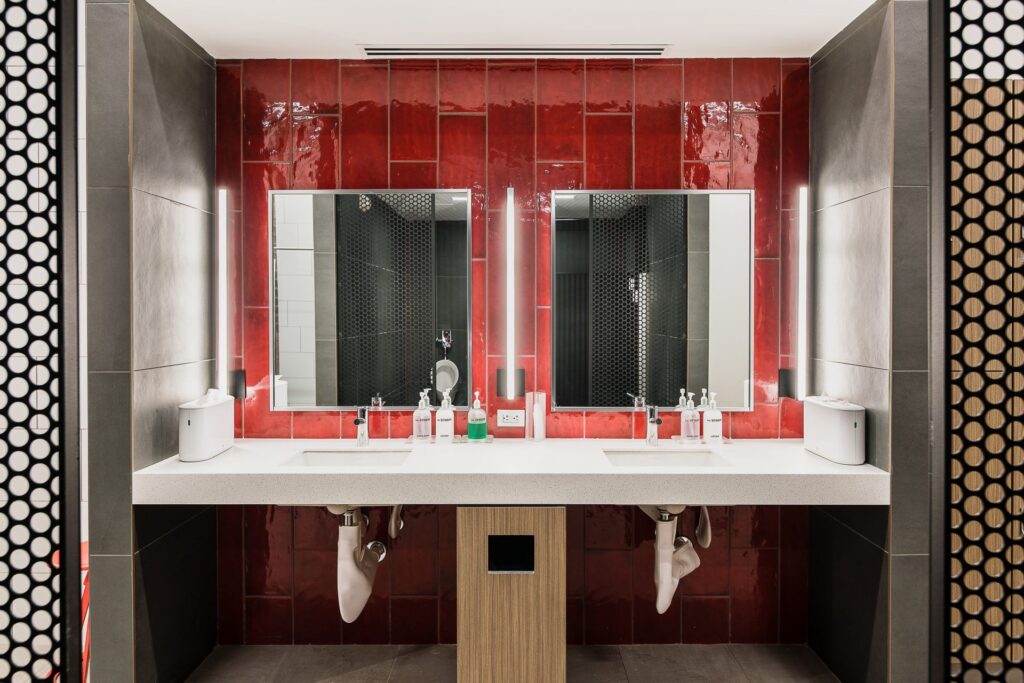
Picture a locker room that offers a serene and revitalizing experience with pops of colors. The flooring features Impervious porcelain tiles with gentle, natural tones and delicate patterns on the floor. These tiles create an open and inviting atmosphere while making maintenance a snap. The bold color pops on the walls, enhancing the mood with increased energy. The use of tiles in this fitness center locker room guarantees not only a hygienic and clean setting but also amplifies the overall member experience. The Refinery – Atlanta, GA
Tiles are widely applied in educational settings, catering to the unique needs of schools, colleges, and universities. Tile is as playful as the inhabitants.
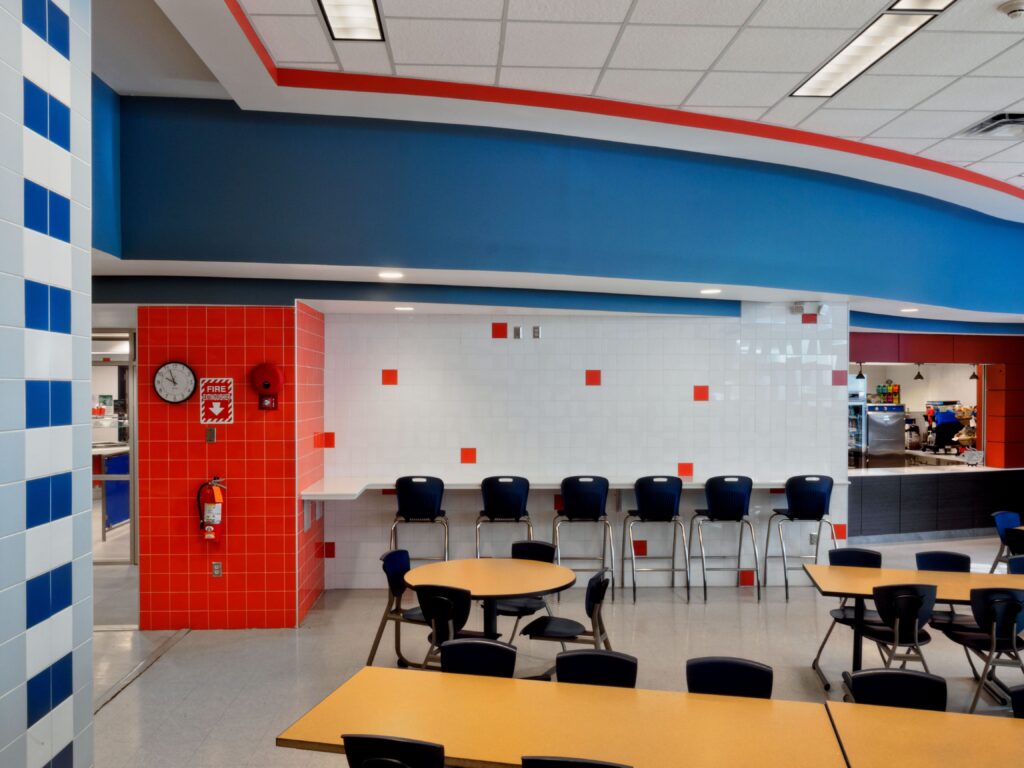
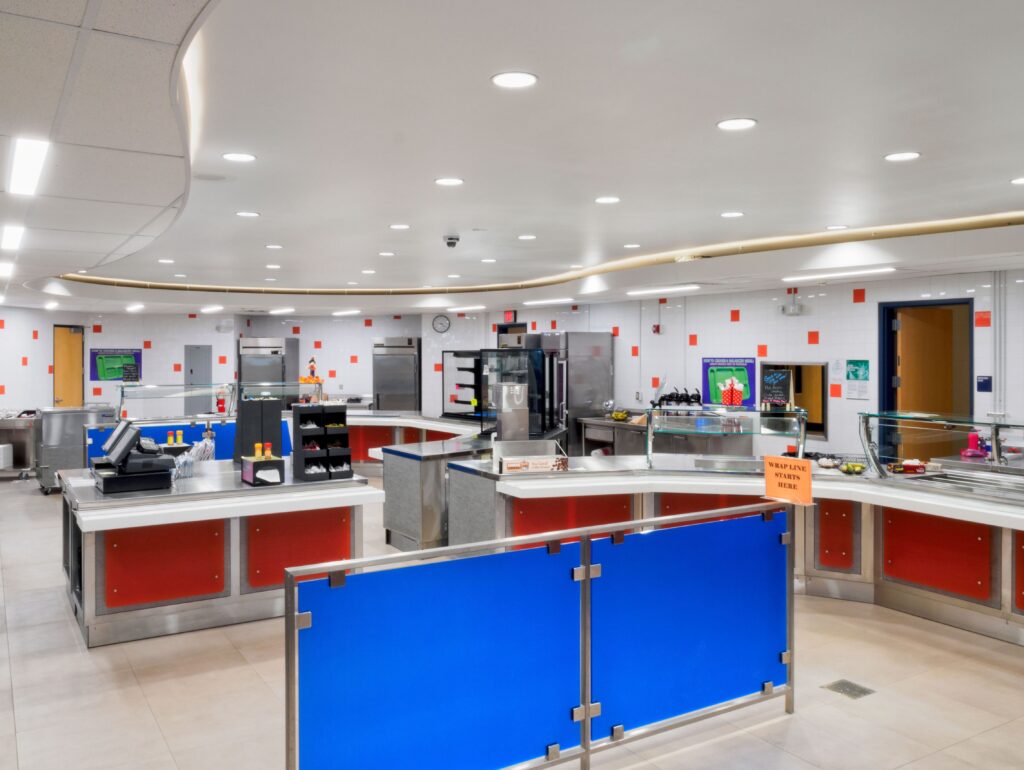
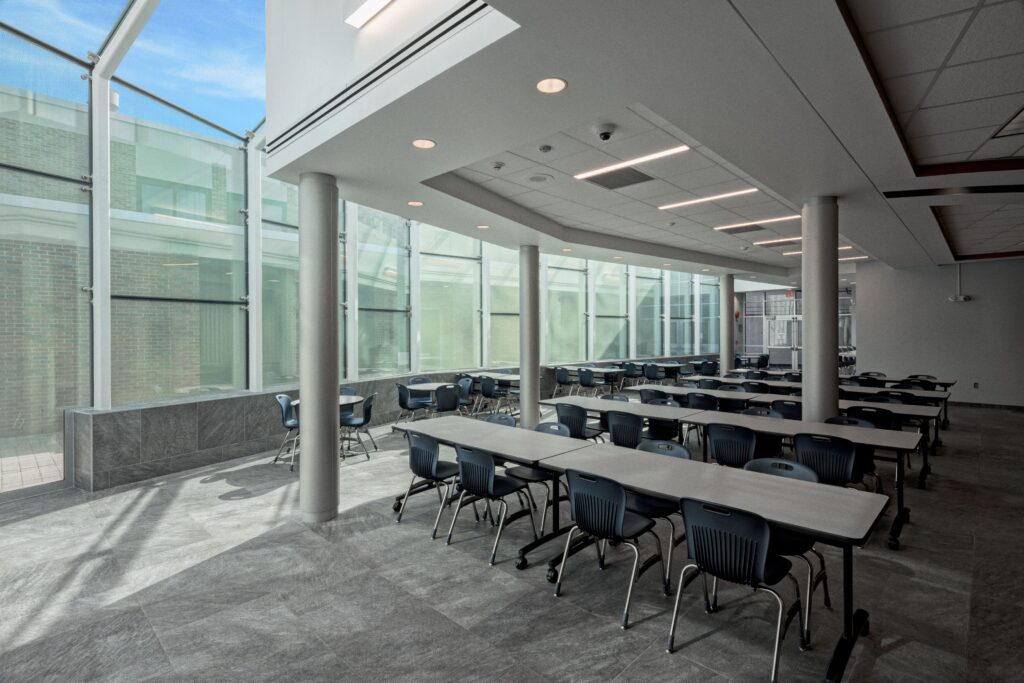
When designing for education projects, it’s essential to understand the function and color needed for the space. Recently, CSArch was tasked with updating the cafeteria at Columbia High School to increase seating capacity and shorten meal serving times.
Design visions for education projects often prioritize natural daylight and versatility to extend the intended use of areas within a school. A modular design is often the preferred choice to meet these project needs.
In multi-family residential complexes, tiles serve various functions, adding practicality and style.
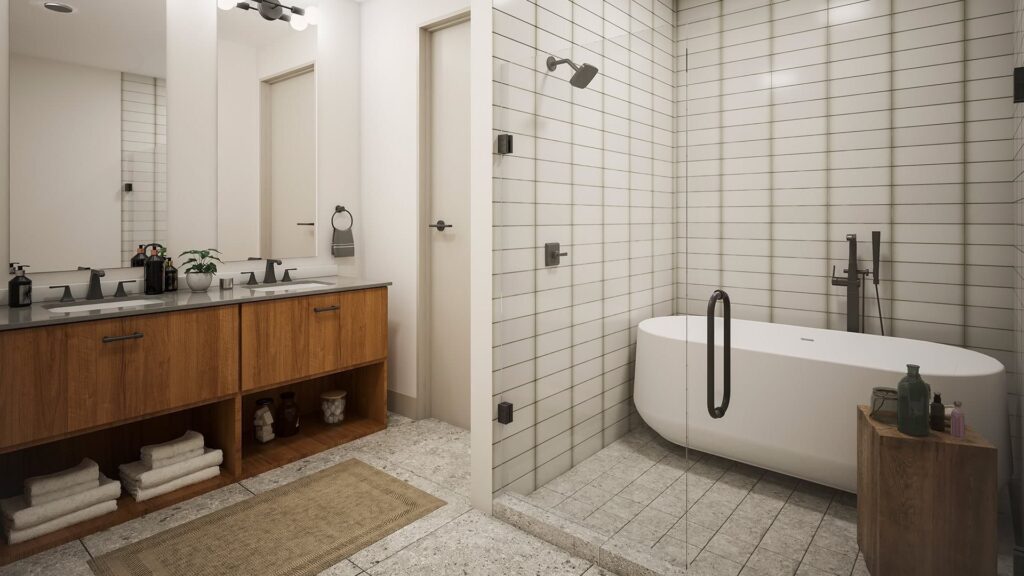
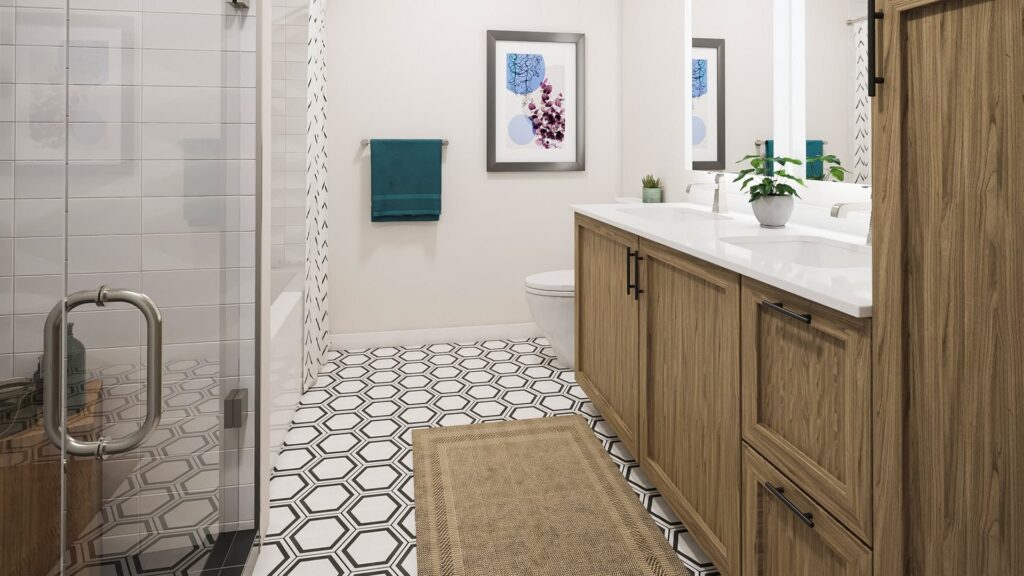
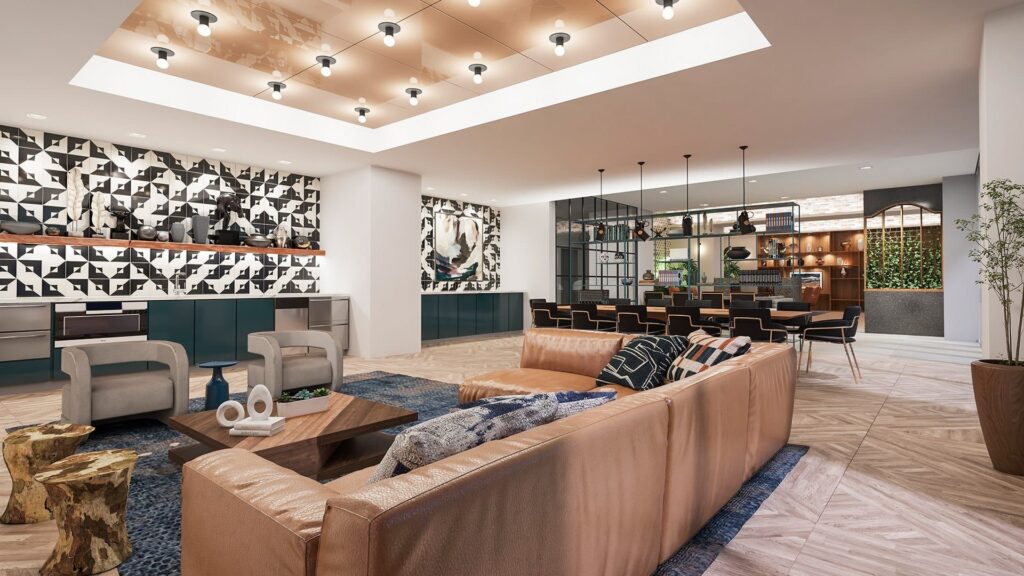
Budget-friendly and design-oriented products are essential in multi-family projects. It is about selecting products that satisfy the design intent and maintain each space’s functionality. Check out the Fallyn project to see how our Design Services team uses their skills.
Incorporating tile designs into commercial spaces involves some best practices and keeping an eye on trends.
Tile is a powerful tool in commercial design, and its applications are extensive. From creating brand identity to enhancing customer experiences, the strategic use of tiles can transform retail spaces, restaurants, corporate offices, and healthcare facilities. With a wide range of materials, colors, and patterns available, the possibilities are limitless. As we’ve seen in case studies and examples, the choice of tiles directly impacts the functionality and ambiance of commercial spaces. By following best practices and staying updated with emerging trends, architects, interior designers, and business owners can continue to harness the potential of tile design to create spaces that are not only functional but also aesthetically pleasing and aligned with their objectives. In the ever-evolving world of commercial design, tiles remain a timeless and impactful element that will continue to shape how we experience and interact with the spaces around us.